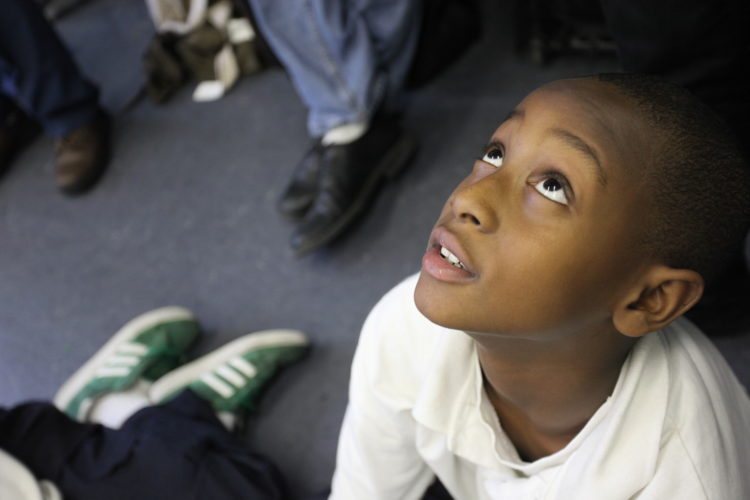In 1899, Jane Addams, Lucy Flower, and Julia Lathrop, three women from Chicago’s South Side, founded the world’s first family court. The court was part of a broad progressive campaign on behalf of young people, which advanced compulsory education, public parks, and child labor laws, and literally coined the word “adolescence” in 1904.
The family court was unabashedly progressive, eschewing the adversarial language of the adult court and relying on informality, diversion, individualization, and community-based programming in lieu of incarceration. Its goal was to promote citizenship among its mostly European disadvantaged wards. Conceived as much to reduce inequality as to reform criminal justice, the family court was a hybrid institution that fostered a distinct jurisprudence for children and an array of social policy responses for troubled youth. The concept spread, and by 1925, 46 states and the District of Columbia, along with 13 foreign countries, had established family courts.
Despite all it does right, family court jurisdiction in most states ends at age 18, an arbitrary age chosen largely through practical necessity. As John Jay’s Jeffrey Butts has written, there is no “magic birthday” at which adolescents achieve full maturity, and, if there were, it certainly wouldn’t be 18. Addams, Flower, and Lathrop got a lot right when they designed the family court, but they picked the age of its jurisdiction based on the customs of the late-nineteenth century rather than research and data (as none existed at the time).
It’s time our justice system caught up with science. With recent advances in neurobiology and developmental psychology, the changing nature of modern adolescence, and increasingly punitive criminal court sanctions, we believe that the adult criminal justice system should look to the family court model for responses to crime by young people ages 18 to 24.
We are hardly alone in our focus on reducing criminal justice inequalities, especially among young people. After chairing a National Institute of Justice panel on justice-involved young adults, Rolf Loeber and David P. Farrington recommended “raising the minimum age for referral of young people to adult court to age 21 or 24 so that fewer young offenders are dealt with in the adult criminal justice system.” And in a recent paper commissioned by the William T. Grant Foundation, former director of the National Institute of Justice John H. Laub encourages future research on programs, policies, and practices to reduce inequalities in justice system outcomes for young people, reporting that youth ages 15 to 25 have the highest victimization rates, and youth age 18 to 24 have the highest violent arrest rates of any age cohort.
Recent research has found that young adults are greater risk takers and are less future-oriented, are more volatile in emotionally charged settings, and are more susceptible to peer influence than fully mature adults. Developmentally, young adults share more with adolescents than they do with older adults—so much so that in his recent book, Laurence Steinberg defines “adolescence” as stretching from age 10 to 25.
The nature of adolescence has changed markedly over the last several generations, not to mention in the 116 years since the family court was founded. Getting married and moving out of home, attaining employment, and completing one’s education are all important life course events that can be bridges to a stable, law-abiding adult life. But today, all of these events are coming later than they did a generation ago, especially for disadvantaged youth and youth of color.
At the same time, the punitive nature of America’s criminal justice system has ratcheted up considerably for all adults, with little concern for the mitigation or malleability inherent in youthfulness.
If one were to deliberately design a criminal justice system to exacerbate offending in disadvantaged youth, one could hardly do better than what we’ve accidentally achieved. Taking malleable and less culpable older adolescents, congregating them with fellow lawbreakers, failing to provide adequate programming, and saddling them with a lifetime of disadvantage has doubtless contributed to this group of offenders having the highest re-offense rate of any age cohort. Instead of viewing justice system involvement as another opportunity to alienate young people, we should use it as a chance both to equalize the playing field between rich and poor, black, white, Asian, and Latino, and to rigorously study the outcomes of different policy and programmatic innovations.
In our recent paper with Kendra Bradner for the Harvard Executive Session on Community Corrections, we recommend creating a more scientifically warranted response to offending by young adults. In a companion piece in Translational Criminology, we recommend, more specifically, 1) raising the age of family court jurisdiction to 21 or 25, 2) creating a separate “third system” specifically geared at this developmentally unique group, and/or 3) combining a developmentally appropriate package of policies and programs from arrest to the termination of reentry. The key elements of each approach would hold young people accountable, limit the iatrogenic impact of incarceration and formal system contact, and increase individualized rehabilitative approaches that help emerging adults bridge the developmental period from adolescence to fully mature adulthood. Above all, these approaches would eliminate or limit unnecessarily burdensome collateral consequences.
As the three women from the South Side of Chicago demonstrated, it’s possible to make progress based on ideals and values alone. But if we want real, sustainable, evidence-based responses to inequalities in the justice system, it will require a translational approach that brings scientific discovery into policy and practice—a process John Laub rightly describes as a “constant interplay.”



